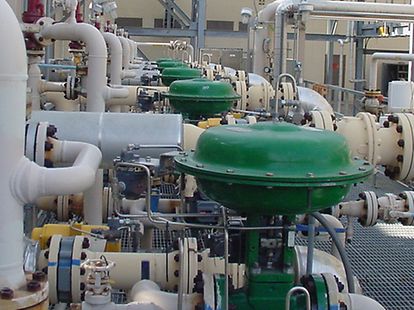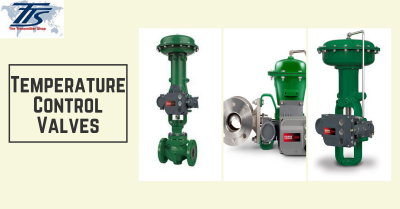Recognizing the Importance of Control Valves in Process Automation
Recognizing the Importance of Control Valves in Process Automation
Blog Article

Maximize Energy Cost Savings and Comfort With Advanced Structure Automation Controls
In the world of modern design and center management, the assimilation of innovative structure automation controls stands as a critical innovation. The merging of technology and sustainability has actually birthed a new age where power efficiency, convenience optimization, and operational streamlining are no more attainable realities but distant ambitions. By taking advantage of the power of automation, buildings can adjust, react, and evolve in manner ins which were once unthinkable. The potential for significant power savings and boosted comfort is not simply an assurance however an opportunity waiting to be fulfilled. This paradigm change in building administration holds the essential to opening a globe where environmental conscientiousness and owner well-being sympathetically exist together within the walls of our frameworks.
Power Efficiency Benefits
Energy efficiency benefits can considerably decrease power usage and functional prices in buildings. Energy-efficient systems, such as sophisticated structure automation controls, can enhance the usage of sources like air conditioning, lights, and home heating, leading to lower energy expenses over time.
Additionally, improved energy efficiency can lengthen the lifespan of structure tools and systems. By running a lot more successfully, HVAC systems, lighting components, and various other building components experience less damage, causing lowered maintenance and substitute expenses. In addition, energy-efficient buildings commonly regulate greater property values and rental rates, offering long-term financial advantages to proprietors.
Additionally, power performance can improve resident convenience and efficiency. Appropriately managed interior atmospheres with optimal illumination and thermal problems create a more conducive and pleasurable workspace, causing boosted employee complete satisfaction and efficiency. In general, the power performance benefits related to innovative building automation controls are complex, encompassing expense financial savings, ecological stewardship, and occupant health.
Improved Comfort Control
Enhancing comfort control in structure environments needs an innovative assimilation of advanced automation systems for ideal passenger health. By making use of advanced building automation controls, facilities can tailor the indoor atmosphere to fulfill the specific needs and choices of passengers. These systems enable exact guideline of temperature, illumination, and ventilation, creating a comfortable and efficient ambience. Owner fulfillment and performance are closely linked to thermal convenience, making it vital to have systems in location that can adapt to transforming conditions in real-time.
By incorporating these innovative controls, buildings can not just enhance comfort yet likewise boost energy performance by optimizing system procedures based on actual tenancy and usage patterns. Inevitably, focusing on resident comfort via innovative automation systems leads to an extra delightful and much healthier interior atmosphere.
Operational Performance Improvements

Furthermore, the execution of real-time surveillance and analytics devices makes it possible for structure operators to identify energy inadequacies and operational anomalies promptly. By continuously keeping an eye on power usage patterns and system efficiency metrics, changes can be made in real-time to optimize power intake and guarantee peak functional efficiency. control valves. In addition, incorporating need action techniques into structure automation controls can even more boost functional effectiveness by dynamically adjusting energy usage based on grid conditions and rates signals
Indoor Climate Optimization
Reliable indoor environment optimization is a basic aspect of building automation controls, making sure owners' comfort and wellness while taking full advantage you could look here of power financial savings. By making use of advanced sensors and controls, building automation systems can continuously keep an eye on and change temperature level, moisture degrees, air high quality, and ventilation to produce an ideal indoor atmosphere. Preserving comfy and regular problems not just boosts occupant fulfillment yet also improves performance and general health.
Interior climate optimization likewise plays a crucial duty in energy performance. By fine-tuning air conditioning, heating, and ventilation systems based on real-time information and tenancy patterns, developing automation controls can considerably reduce power intake - control valves. Applying techniques such as demand-controlled ventilation and thermal zoning can aid decrease power waste while guaranteeing that each area of the structure gets the required conditioning.

Lasting Atmosphere Development
Building automation manages not only optimize indoor climate problems for power effectiveness and passenger convenience however likewise lay the structure for producing a sustainable environment via critical monitoring of systems and sources. By incorporating sophisticated building automation innovations, such as sensors, actuators, and intelligent software, centers can check and readjust power usage in real-time to reduce waste and minimize their carbon impact. view it These systems allow anticipating upkeep, identifying prospective concerns before they intensify and enhancing equipment performance to enhance longevity and effectiveness.
Moreover, sustainable setting production expands past power administration to encompass water preservation, waste decrease, and indoor air quality renovation. Building automation controls can manage water use, identify leaks, and guarantee correct waste disposal techniques, contributing to total sustainability efforts. In addition, by managing and monitoring air flow and filtration systems, these innovations enhance occupant health and wellness and performance while lowering energy consumption connected with a/c operations.
Verdict
Finally, advanced structure automation manages deal substantial advantages in terms of power savings, convenience control, functional efficiency, interior climate optimization, and creating a lasting setting. By applying these controls, buildings can achieve optimum efficiency while minimizing energy usage and improving owner convenience. It is obvious that making use of innovative automation technology is vital in boosting building performance and creating a much more lasting future.
Power performance benefits can considerably minimize power intake and functional prices in structures. In general, the power performance benefits connected with advanced structure automation controls are complex, encompassing cost savings, ecological stewardship, and passenger wellness.
Additionally, incorporating need feedback methods into building automation controls can better boost operational efficiency by dynamically readjusting power usage based on grid problems and rates signals.
Building automation manages not just enhance interior environment conditions for power effectiveness and resident convenience yet likewise lay the foundation for developing a sustainable environment via critical monitoring of resources and systems.In conclusion, progressed structure automation controls deal significant advantages in terms of energy financial savings, comfort control, operational effectiveness, indoor environment optimization, and creating a lasting environment.
Report this page